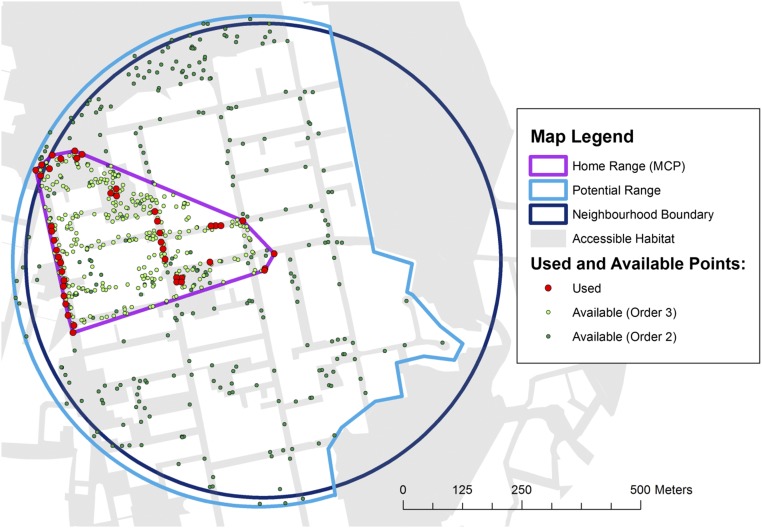Fig. 2.
Scales of children’s habitat selection preferences: third order [HR: MCP around the child’s used (red dot) locations]; second order [PR: based on the maximum distance traveled at home and excluding areas identified as inaccessible]. In this example, the PR has been amended to exclude woodland habitat on right edge of the buffer that the child was not allowed to visit alone. Randomly generated available points within accessible habitats characterize availability of different habitat types (light green, third order; dark green, second order). The neighborhood boundary is a standard 500-m buffer around each child’s home representing the child’s NN.

